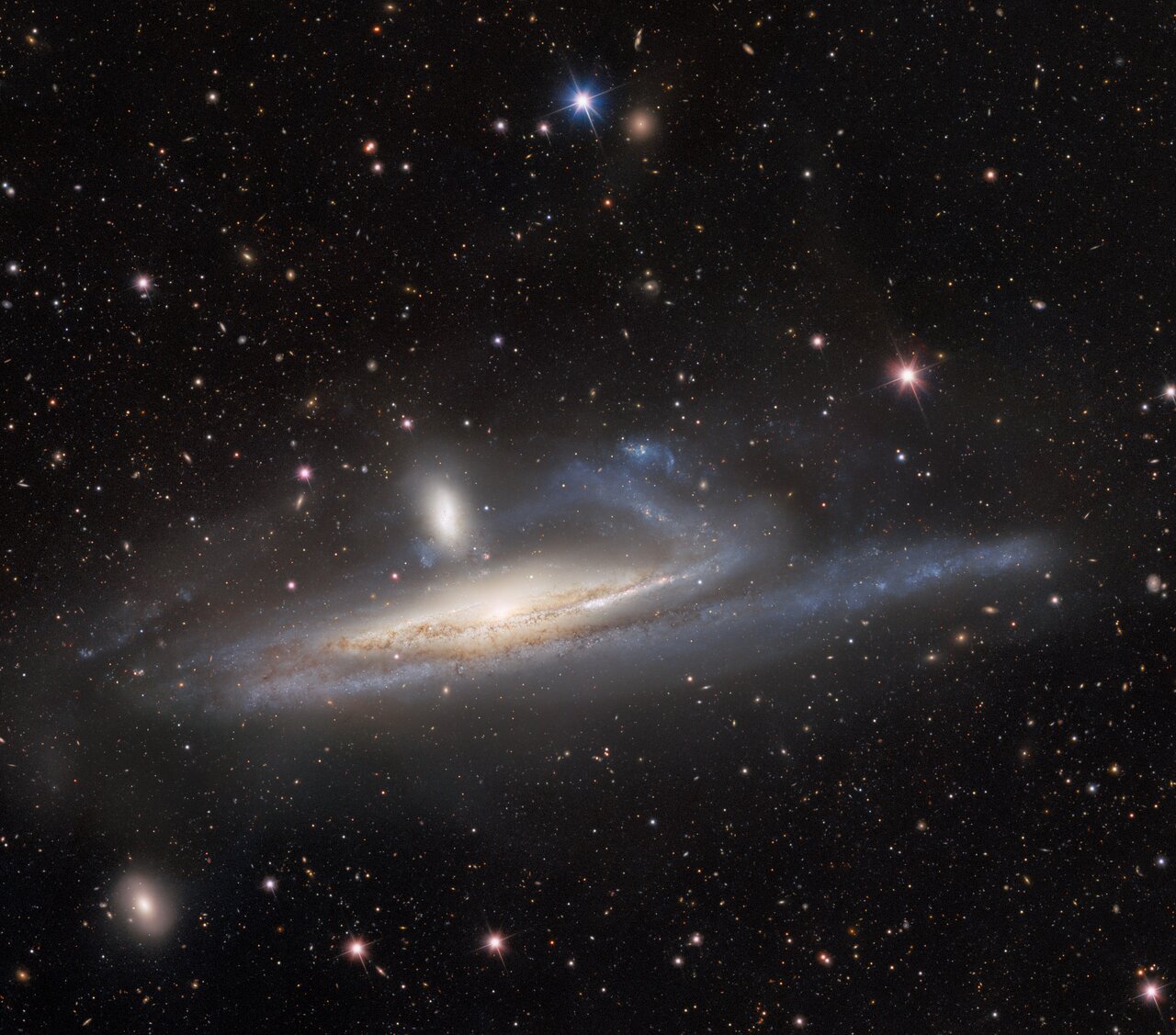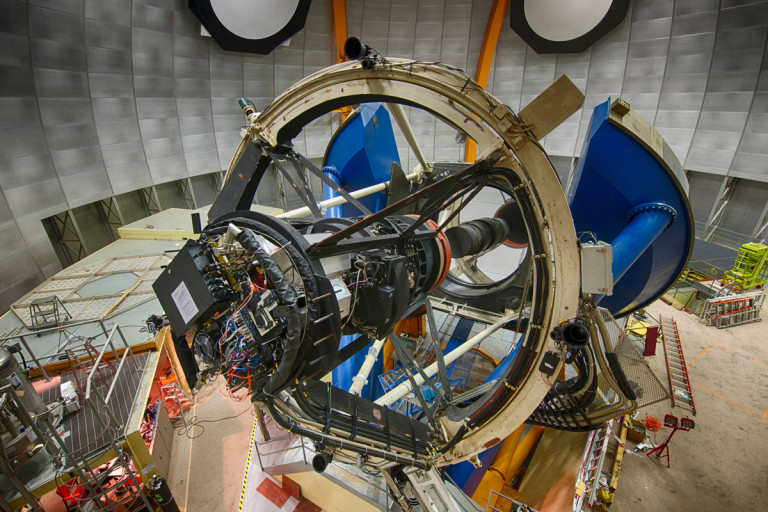Dark Energy Camera captures galaxy being slowly swallowed by its neighbor
Stunning shot of Hayley's Coronet and neighboring dwarf galaxy was captured by a ground-based infrared telescope

In a captivating celestial spectacle, the spiral galaxy NGC 1532, affectionately known as Haley's Coronet, has been caught in a cosmic tug-of-war with its smaller companion, the dwarf galaxy NGC 1531. This extraordinary interaction was recently captured by the US Department of Energy's Dark Energy Camera (DECam) mounted on the National Science Foundation's Víctor M. Blanco 4-meter telescope at Cerro Tololo Inter-American Observatory in Chile.
Astrophotography is possibly the most awe-inspiring genre of photography, and the best cameras for astrophotography enable anyone with the know-how to capture stunning photos of space from earth. The images captured might not be as detailed or as images captured by the DECam or indeed the James Webb Telescope but with patience and research you’ll be surprised at what you can achieve.
• Also check out the best telescopes for astrophotography so you can capture images even deeper into space
Galaxies are the building blocks of our universe and over billions of years, they undergo a process of growth and evolution. Thanks to advancing camera technology, mesmerizing images such as this offer us a glimpse into the early stages of how galaxies grow by absorbing nearby companions and merging with other galaxies.
Located in the Eridanus constellation, around 55 million light-years away, is the NGC 1532 barred spiral galaxy which – when viewed from Earth – is seen with sweeping spiral arms, one extending downwards and the other upwards
The reason for the asymmetry of the galaxy is the gravitational pull of its smaller neighbor, the NGC 1531 dwarf galaxy. Despite its vastly smaller size, the dwarf galaxy exerts a noticeable gravitational influence on the larger one, creating a distortion in one of its spiral arms. When two galaxies interact, they release plumes of gas and dust which produce bridge-like structures between them, held in place by competing tidal forces. This captivating interplay also triggers bursts of star formations which adds to the magical astronomical spectacle.
Captured on a Dark Energy Camera mounted on the National Science Foundation’s Víctor M. Blanco 4-meter Telescope at the Cerro Tololo Inter-American Observatory in Chile, the highly sensitive camera allows astronomers to detect faint objects in our solar system. Since it has an exceptionally wide field of view, it plays a vital role in capturing detailed galaxies in deep space and gives scientists a better understanding of how our solar system came to be.
The best camera deals, reviews, product advice, and unmissable photography news, direct to your inbox!
DECam is made up of five main components: a 570-megapixel CCD camera, a low-noise electronic readout system, a wide-field optical corrector, a combination shutter-filter system and a hexapod adjustor to provide stability. With a 2.2° field of view, in a single image, it's able to capture an area 20x the size of the moon when viewed from Earth making it the widest ground-based infrared imaging system.
As we delve deeper into the cosmos and continue to unearth its secrets, awe-inspiring celestial display such as Haley's Coronet reminds us of the ever-changing and dynamic nature of our universe. We still have so many unanswered questions about the cosmos such as how did the universe begin? And what is dark matter? But large-scale, high-resolution telescopes positioned both on Earth and deep in space are enabling astronomers to develop a better understanding of our fascinating universe.
Also check out the best lenses for astrophotography and browse a range of wide-angle lenses geared up for shooting the night sky

Having studied Journalism and Public Relations at the University of the West of England Hannah developed a love for photography through a module on photojournalism. She specializes in Portrait, Fashion and lifestyle photography but has more recently branched out in the world of stylized product photography. Hannah spent three years working at Wex Photo Video as a Senior Sales Assistant, using her experience and knowledge of cameras to help people buy the equipment that is right for them. With eight years experience working with studio lighting, Hannah has run many successful workshops teaching people how to use different lighting setups.

